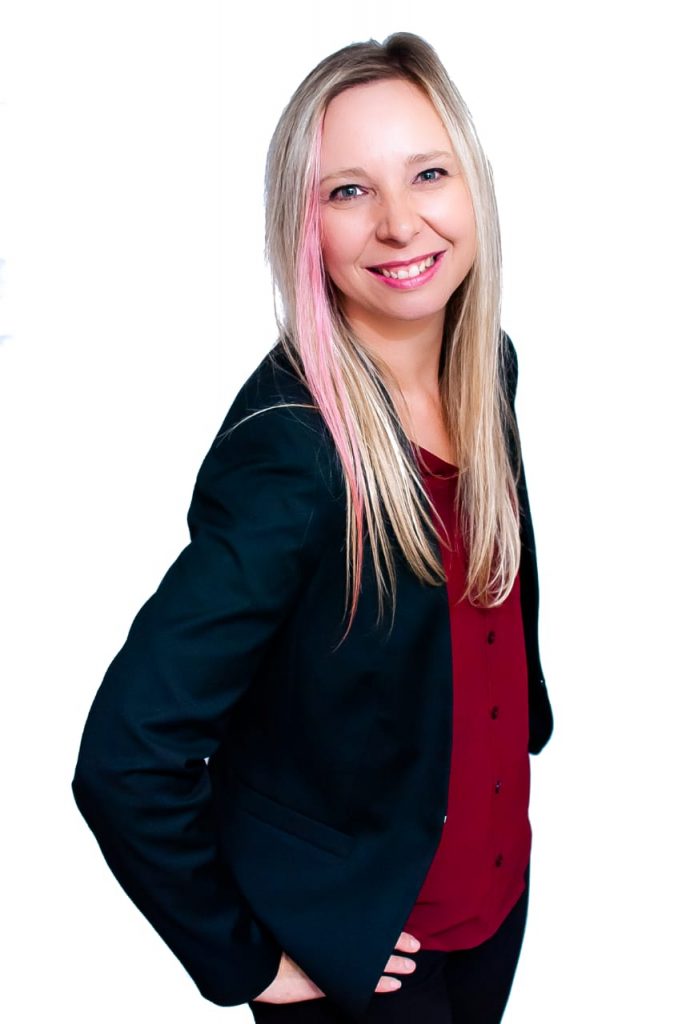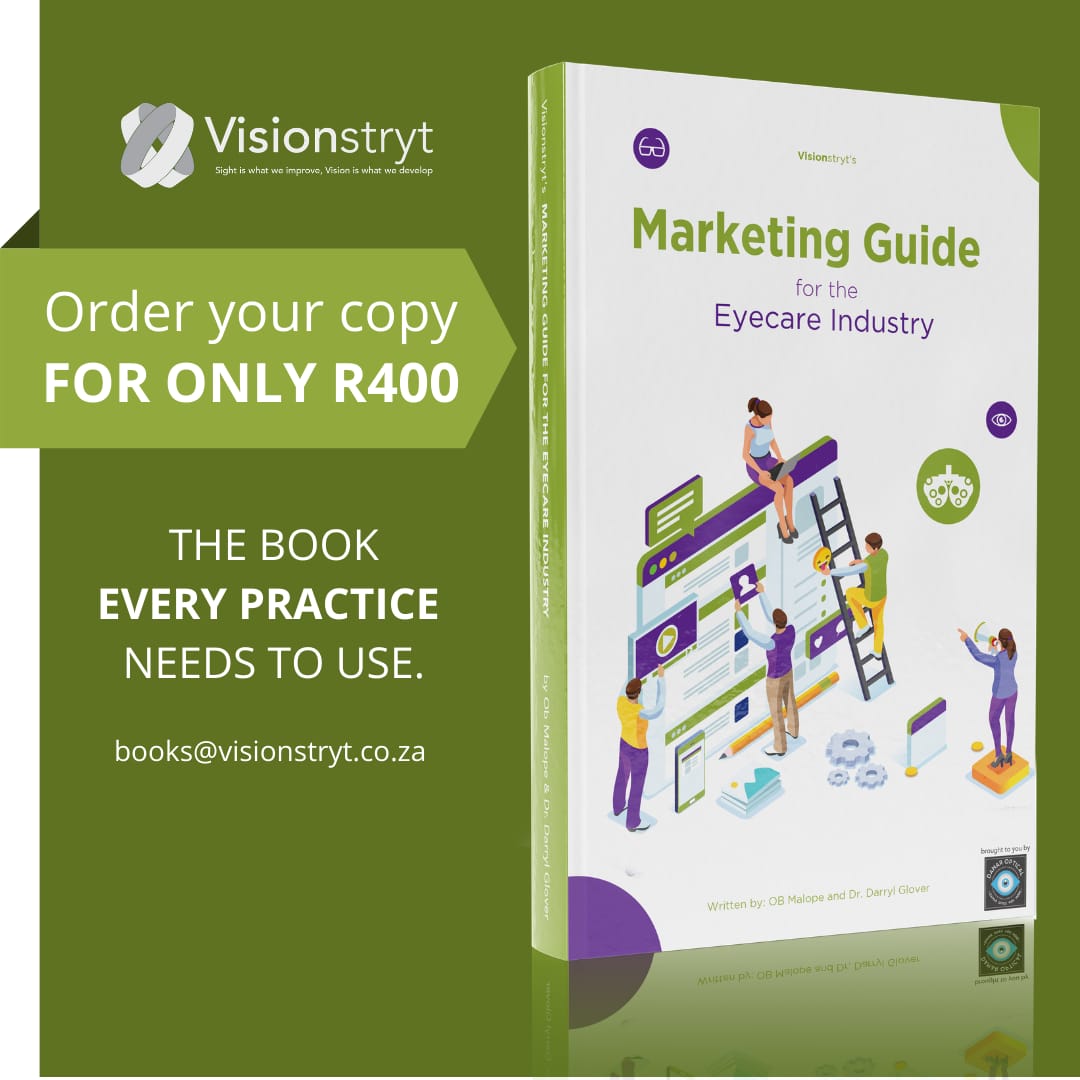For a successful fit with a speciality contact lens, the two sides of patient expectation and clinical motivation need to meet each other in the middle. Be cautious not to focus too much on the clinical motivation for fitting a scleral lens. You also need to give patient expectation enough thought.
Let us then start our fitting journey by ensuring a well-balanced approach for the patient.
Patient Expectations

Lizelle Dorfling-Smith, B. Optom CAS (NECO).
- Firstly, find out how are your patient’s visual condition affecting their life.
- Sometimes we can be very motivated to fit a scleral lens, but the patient feels that they are coping just fine. Ask probing questions like: “Tell me about your profession and do you experience that your vision is interfering with your everyday tasks at work and home?”
- How motivated are they to explore a contact lens modality or a different one from what they are currently using?
“What are the challenges you experience with your current contact lenses?” This is very important, as it will also guide you in the right direction when deciding if scleral lenses might be an option for this patient or not. - Any limitations to handling contact lenses. Eyelid problems for example entropion, ectropion and even floppy lids might affect your decision for lens modality.
- Auto-immune diseases or systemic conditions that might affect lens wear.
- Patient Counselling to manage patient expectations.
Remember to discuss the process here and how important the follow up visits are for changes that need to be made within a certain time frame. Here I also mention that I do have a contract and it is to make sure we both understand and agree to whatever the process entails. Potential scleral lens complications and instructions for proper course of action should these complications occur should be discussed and included in the agreement that patients should sign. Written and verbal education should also be provided about care solution and hygiene. [1] For more patient education there are some great online resources for patients. You can send them links to the following: www.sclerallens.org, www.ealsa.org, www.gpli.info - Staff Education and involvement.
You need to identify who is a good candidate for scleral lenses and who is not. [2] Even your staff needs to be educated in the patient selection process because they also need to support your patient during this journey.[3] It is a great idea for some staff members to wear scleral lenses themselves, so they can experience the limits and benefits. This will help increase empathy with the patients and help with transmitting a confident and secure atmosphere. Your patients will also be talking to your staff on the phone regarding potential difficulties they might experience during the process. Here your staff need to be optimistic, friendly, and eager to assist. This can all make a huge difference in how your patients experience the process.
Clinical Motivation
- What is the corneal condition and shape?
- Normal, regular cornea to correct astigmatism, myopia, hyperopia, and presbyopia.
- Keratoconus: mild, moderate, or severe.
- Post-PK: The benefits of scleral lens wear in post-PK patients’ rehabilitation are well known [4], but there are also a few considerations that need to be investigated before fitting these compromised corneas. It is important to consider the endothelial cell density (ECD) [5] & graft health. [6][7]. The Coefficient of Variation (CV) is equally important when it comes to the endothelial health. [11]
- Post-Lasik Ectasia
- RK: The shape of the cornea as with PK patients will point you towards an oblate design for better aligning to mimic their oblate cornea. Making a note of pre-existing neovascularization (NV) into the cuts is also important to track the possible increase in NV that could indicate some hypoxia.
- Elevation Maps on your topographer will give you a great idea as to the shape of cornea you are dealing with. Over the years, corneal visualisation has become more than just topography but has gone to tomography, to get a better idea of, not only the front surface, but also the back surface of the cornea. This can also determine the type of lens needed. For example, very central mild to moderate KC can still do very well in Hybrid contact lenses. [8]
- How serious are their corneal conditions?
This will also guide you as to what lens might work the best for them. That might not even be a scleral lens. Many patients can still function well with spectacles and normal soft contact lenses despite these conditions and that is great! If that is the case and they are happy to keep wearing spectacles, this will not be a strong motivation for scleral lens wear. They just end up not wearing the scleral lenses. With that being said, we as ethical professionals still need to present our patients with all their options to manage their condition, so they can make an informed decision. - Pathology: cataracts, ARMD, glaucoma. All these conditions can affect the visual outcome scleral lenses offer. You and the patient need to know that before pursuing a fit.
- Ocular surface diseases (OSD) or conditions like dry eyes.
The wonderful options that scleral lenses offer in treatment of these conditions are well documented. [9] [10]. MGD (Meibomian Glad Dysfunction) also needs to be managed before and throughout the process of lens wear. Patients need to be aware of their cleaning regimen for lids and lenses to avoid complications during scleral lens wear. - Pterygiums, pingeculas, conjunctival Blebs and drainage devices that might affect scleral lens fitting.
These scleral surface irregularities are very important to be aware of and it will also influence the diameter of your lens together with the HVID. This will also help you consider different designs, like quadrant specific designs and customized scleral lenses. - Potential clinical contraindications for scleral lens wear.
Although scleral lenses are a wonderful option for many patients with many different corneal conditions, we should not shy away from the possibility that it may not be an option for all our patients. [11]
To conclude, if your patient is not very motivated or has too high expectations when it comes to scleral lenses, both you and your patient will end up frustrated with all the visits. Especially, if the process encounters some complications.
We all know that a well fit scleral lens will speak for itself. We just need to find that fine balance between being positive and confident about what scleral lenses can offer, but also being honest about the process to get there.
Sometimes your fit might not be perfect, but it is the best you can do.
If vision and ocular health are good, and your patient is comfortable then you and your patient will be in a happy space.
We as fitters try to take something that is already abnormal and try to only make it function better than before.
After thinking through all the above points, do you think you and your patient are on the same page. Enjoy your journey, have fun sailing, anticipate some storms and difficult weather to navigate. The reward for you and the patient is very real.
Therefore, I take on the storms with confidence. To experience the reward of seeing a patient drive again. Even just feeling more comfortable and without pain and discomfort from excessive dry eyes.
That is the reason for my passion to fit scleral lenses and I am not the only fitter that shares this passion.
References:
[1] Barnett M, Fadel D. Clinical Guide for Scleral Lens Success. SLS & AILeS. 2018
[2] Fadel D. Taking the Mystery out of Scleral Lenses. Contact Lens Spectrum.2020.
January; 35:33-40
[3] Potter R. The importance of staff training for GP lenses. Contact Lens Spectrum. 2014; May;29;28-30,32.
[4] https://www.contactlensjournal.com/article/S1367-0484(13)00306-8/fulltext
[5] C. Sindt, Endothelial considerations in scleral lens wear, First Congress of
Accademia Italiana Lenti Sclerali (AILeS) (2018) 10–11
[6] S. Basti, R.M. Grohe, The growing role of scleral contact lenses in corneal and
external ocular conditions, American Academy of Ophthalmology (February)
(2013).
[7] M. Barnett, The right fit for the irregular cornea: smooth things over with scleral
lenses. Review of optometry, 15 August (2017).
[8] https://keratoconusdoctors.com/synergeyes-hybrid-contact-lenses/
[9] Sorkin S. Scleral contact lenses help manage ocular surface disease. Optometry Times. 2019; June; 28-29.
[10] Barnett M. Scleral Lens and Ocular Surface Wettability. Scleral Lens Monthly. Contact Lens Spectrum. 2019; June.
[11] Fadel D, Kramer E. Potential Contraindications to Scleral lens wear. Contact Lens and Anterior Eye 42. 2019; 92-103.
Article by Lizelle Dorfling-Smith, B. Optom CAS (NECO)


